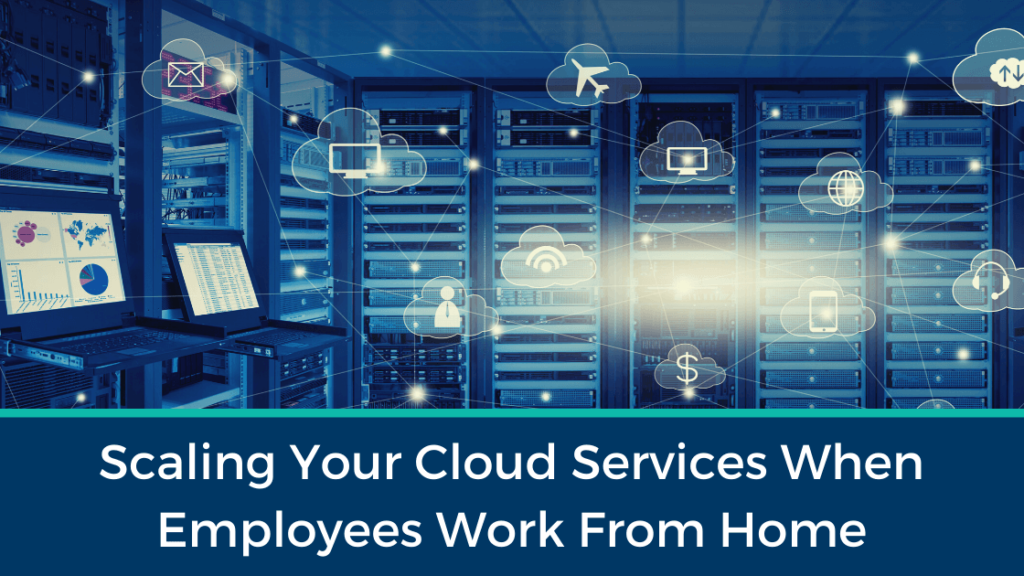
According to a CISCO report, the Cloud will host over 95% of workload and computing processes in 2021.
Thanks to the pandemic, remote work is no longer a buzzword, prompting most organizations to “go with the tide.” However, the overwhelming process of switching to a remote workforce from a predominantly on-site one can be streamlined by leveraging the Cloud for remote working. Cloud allows businesses to build custom strategies around technology and remote working and enable growth and flexibility.
The past decade has witnessed a rapid transition to cloud computing to mitigate the challenge of channelizing work traffic– especially for blooming businesses. Scalability is the primary hallmark of the Cloud and one of the most compelling reasons for businesses to make the move. Efficiently managed Cloud for remote working solutions can result in easy deployment and ensure smooth functioning of an online workforce.
This article looks into cloud computing scalability and discusses the importance of scaling your cloud services for businesses in-depth:
Cloud Scalability: What is it?
Before we discuss the benefits and uses of cloud storage, it is essential to understand the concept of cloud scalability. Scalability is often interchangeably used for “growth.” But in essence, scalability relates to the capability of an enterprise to grow and manage demand that varies and is driven by season, projects, or expansion. Similarly, cloud scalability relates to adding or reducing IT resources to enhance a system’s ability to accommodate varying workloads.
The Cloud helps handle the sudden spikes of demand arising from constantly varying front and back-end traffic without disrupting existing infrastructures. It supports business growth without requiring expensive resizes of the current server closet.
Once an enterprise achieves cloud scalability, it can scale its cloud environment on-demand, resulting in the cloud growing and shrinking along with the enterprise.
What happens when a business is not scalable?
In a real-world IT environment, dynamic demand levels often result in companies struggling to arrange enough computing resources that cover their expected peak demand. For instance, a SaaS business would need to maintain costly resources to manage peak traffic levels on Black Friday or Cyber Monday the whole year round without a scalable cloud system.
Types of Cloud Scaling
When you take advantage of scaling your managed IT cloud services, it’s essential to consider the various types of scalability available to businesses and configure a cloud environment accordingly to best suit organizational needs.
These include:
Vertical Scaling
Also known as scaling up or down, vertical scaling refers to adding or reducing power to an existing cloud server through faster CPUs, memory, or I/O resources. When a business scales vertically, it enhances a resource to alter the capacity of the existing infrastructure. Vertical scaling has an upper limit based on the capacity of the server’s size or computing power of the machines being scaled.
Horizontal Scaling
With horizontal scaling, a business ‘scales out’ by provisioning (or removing) additional servers from the infrastructure to even out the workload. Splitting workloads across servers caps the number of individual servers receiving requests, resulting in enhanced performance and storage capacity.
Diagonal Scaling
Diagonal scaling is a combination of vertical and horizontal scaling; wherein an enterprise grows (vertically) within its existing infrastructure until it hits the maximum capacity. Once that happens, the business can clone its servers to add more resources to new cloud servers.
How can cloud storage can be implemented in working environments?
Businesses have multiple options for setting up a customized, scalable cloud solution to implement cloud storage in their working environments:
Switch to Virtual Machines
Virtual machines are flexible and easily scalable compared to physical machines whose resources and performance levels are relatively limited. They can also be moved and hosted on different servers simultaneously.
Adopt a suitable cloud model
Adopting the right cloud model is also crucial for scalability. Businesses can opt from third-party, public cloud vendors to private and hybrid clouds. Some cloud models have greater access to significant resources, allowing speedy and cost-friendly scaling, while others don’t. Similarly, some solutions such as AWS Autoscaling are auto-scalable, meaning pre-defined rules can be set to scale automatically when the business reaches certain thresholds.
How the pandemic has accelerated the move to the Cloud
Post the mass global disruption caused by COVID-19; multiple businesses had to drastically lay off or go to the verge of bankruptcy – a scenario that continues to unfold. But, work from home cloud computing solutions emerged as a savior for agile businesses by making the transition to remote work easier by helping identify new demand and upholding operational safety, with little to no shutdowns. Cloud also enables employees to collaborate with co-workers, communicate with clients, and build products in real-time while maintaining a safe distance.
Custom App Development and Scaling Your Cloud Services
“Custom application development is generally done on which type of cloud service?” is a premier question to answer for businesses building custom, cloud-based apps for their services in-house. Adopting the wrong approach can easily disrupt business development, lead to subpar web performance, and even result in data losses.
The solution could be to opt for one of the market leaders when choosing a cloud service vendor. For instance, Amazon Web Services (AWS) offers extraordinary flexibility and integration, paving the way for custom app-building of any nature. Other providers include Microsoft Azure, which best suits enterprises that host multiple web products and intend to scale significantly.
Embedding scalability within business architectures is the need of the hour!
Scale your cloud services enable enterprises to achieve business growth while upholding competitiveness by seizing opportunities or pre-emptively mitigating risk. The Cloud’s real potential to unlock higher flexibility, greater experimentation with new technologies, and timely responses to rapidly evolving market demands and circumstances make it imperative for today’s tumultuous business environment.
Businesses that fail to embrace Cloud, the new normal, are bound to struggle to stay afloat in the long run.
Thanks for Sharing this vital information with us, I really admire this post